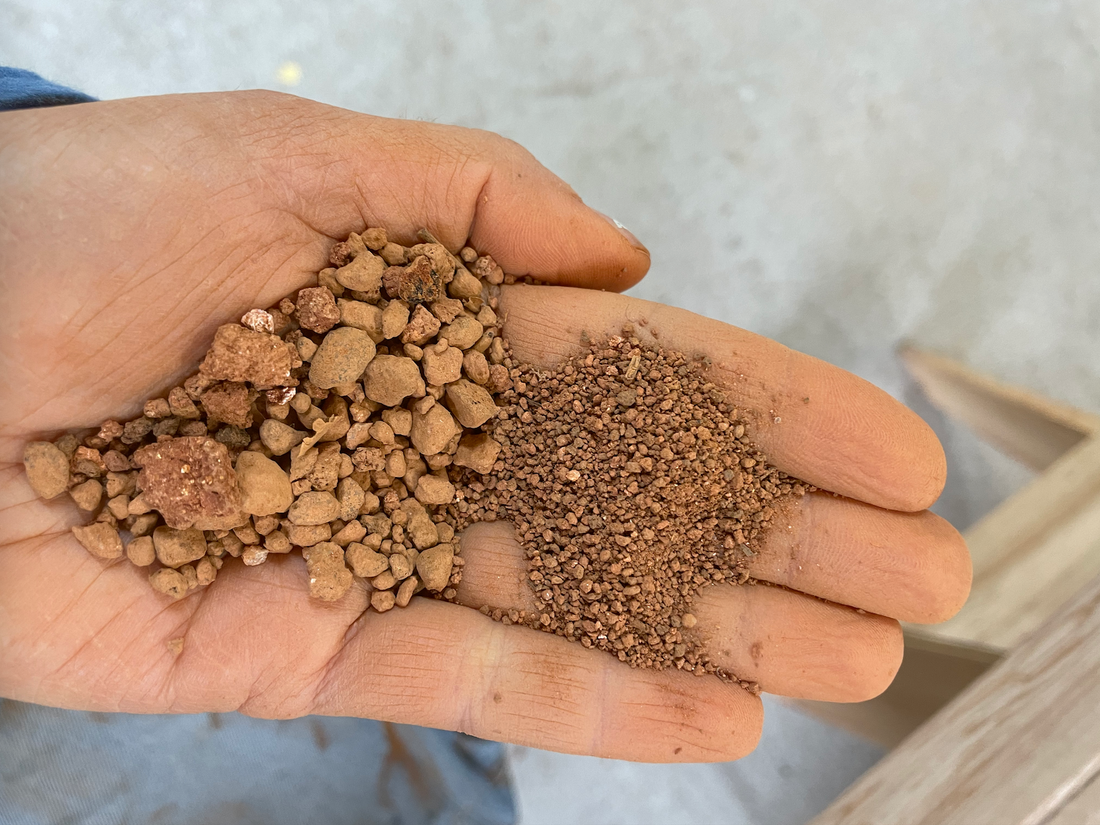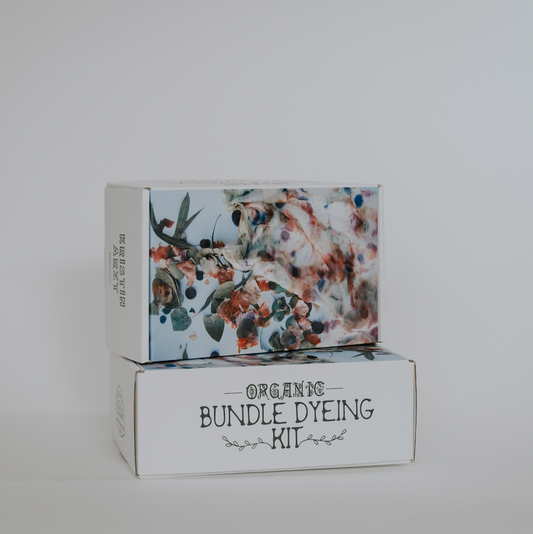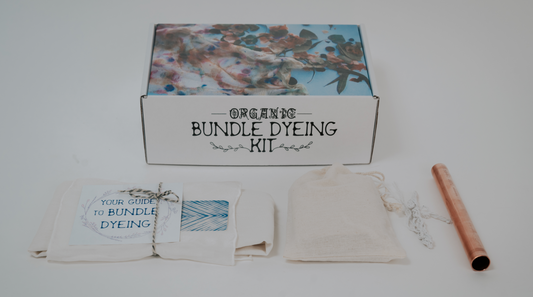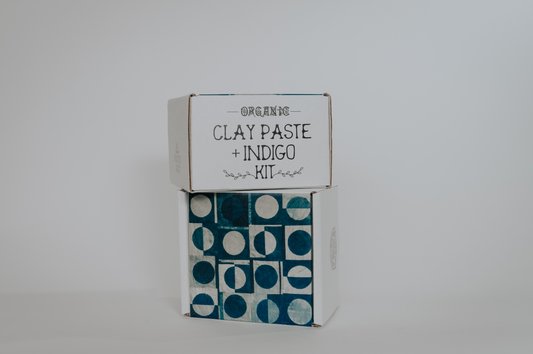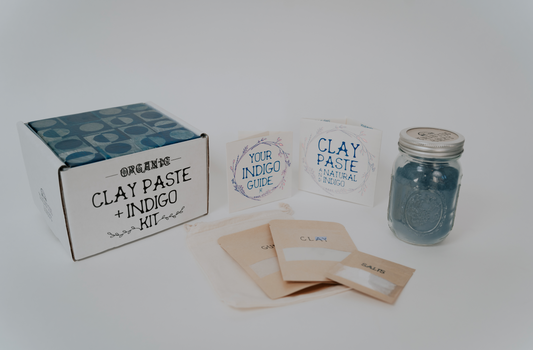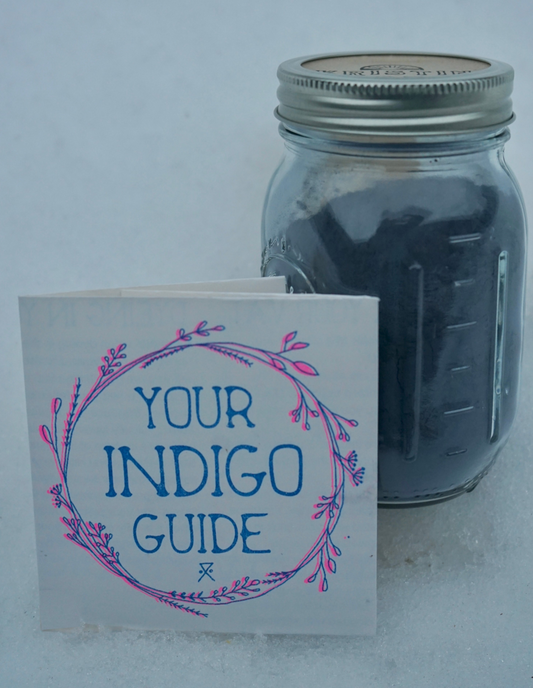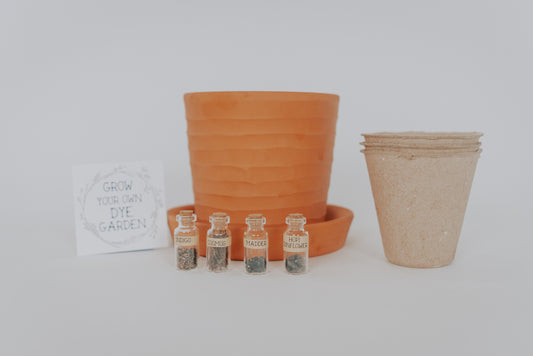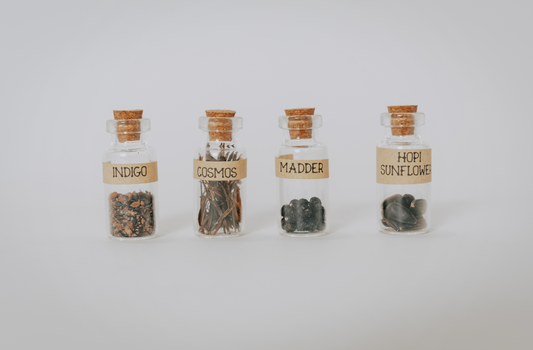A Step-by-step Guide to Making Your Own Clay Paste Resist For Indigo Dye

What is Clay-rich Soil?
All soil contains traces of clay, and some soils are more clay-rich than others. The drainage in tightly-packed clay rich soil is often limited. When observing the ground around you, look for areas of the earth where water sits on the surface after a rain. You can find clay rich soil where land has recently eroded. Construction sites can be a great source. If you are digging on your own, you’ll want to dig about 8 inches below the topsoil line.
After your clay is made and you are ready to mix your clay paste, head to the clay paste resist guide to learn how to mix the paste and dye with indigo.
How to Dig For Wild Clay to Make Clay Paste Resist
Step 1: Gather Your Materials
Before you get started, gather up a few containers, a screen (a screen door works well), and a face mask. These simple materials will allow you to separate the clay from the silt in your soil. Using a shovel or spade, dig below the topsoil line, about 8 inches, to where the soil is more densely packed. Start by collecting a handful of clay. Break it into small pieces with your hands and get ready to dry it for a few hours.

Step 2: Dry the Clay
All soil also contains sediment, like sand, rocks, grass, silica, and more. In order to filter out the sediment from the clay paste, break it into small pieces and let it dry in the sun. In the photo example, I used old drywall remnants because it readily absorbs moisture. Every hour or so, move the soil around with your hands. If it is very humid or cloudy where you live, you can lay the soil out on tin foil and put it in the oven on its lowest setting.

Step 3: Separate out the Clay
Once your soil is dry to the touch and crumbles easily in your hands, you are ready to separate out the clay from the silt and sediment in the soil using a screen. Make sure you wear your mask at this stage and work in a well-ventilated space. Small clay particles can irritate the lungs if you do not wear respiratory protection.
Gather your containers, screen, and a few binder clips. If you are working on a small scale, yogurt containers work well. If you are working large, 5 gallon buckets will be great for this step. Secure your screen to the edges of the container using your clips.

If you are just testing the process and the clay, an old window or door screen works well. If you want to get more technical, you can use a series of screen meshes to sieve the soil. Start with mesh 40, filter, move to mesh 80, filter, and beyond if you wish. The large the mesh number, the finer the sift will be. Brace the container with one hand and push the soil through the mesh screen with the other.

Step 4: Make Clay Paste
Visit our clay paste resist guide to learn how to mix your own clay paste resist and work with indigo dye.
A huge thank you to Tori Motyl of Motyl Pottery for sharing this technique with me!


